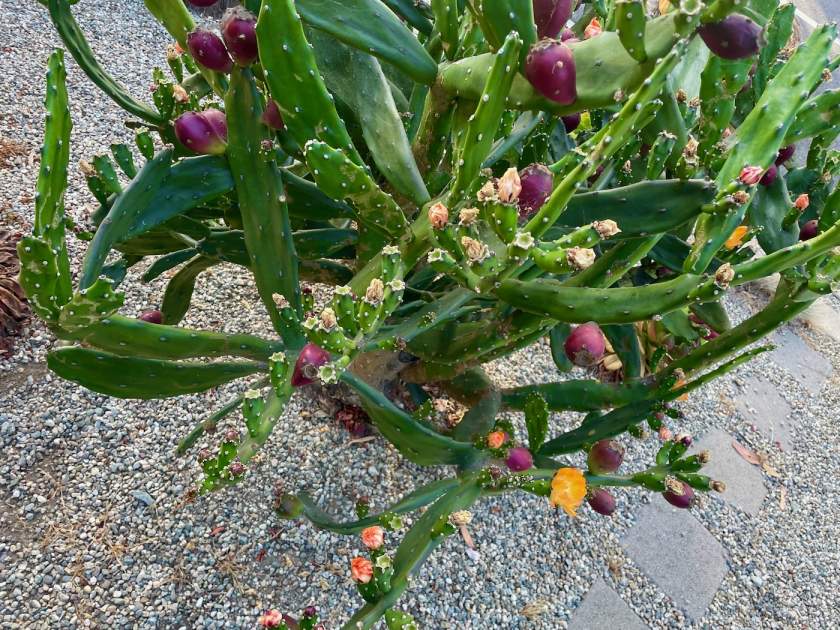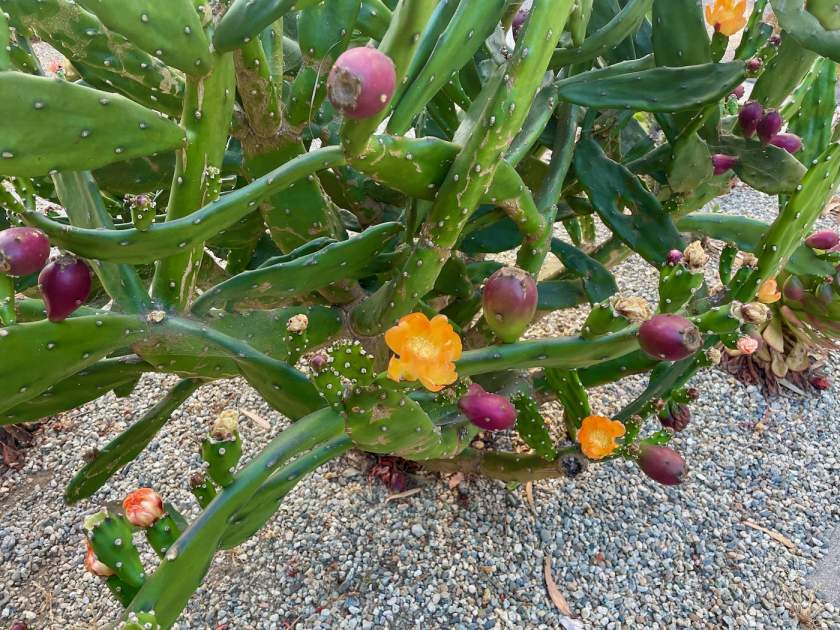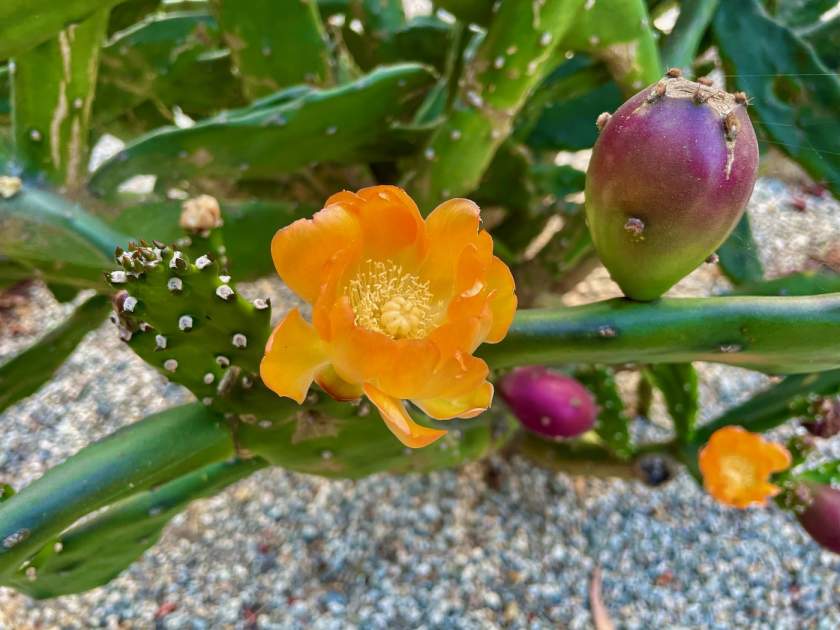Opuntia ficus-indica: Exploring the World of Sweet Prickly Pear
Opuntia ficus-indica, commonly known as Sweet Prickly Pear, Smooth Mountain Prickly Pear, Indian Fig, Mission Cactus, Tuberous Prickly Pear, Nopal, Barbary Fig, Cactus Pear, and Spineless Cactus, is a remarkable succulent that belongs to the family Cactaceae. Native to arid and semi-arid regions, this versatile cactus has earned a place of importance not only as a cultivated crop plant but also as an ornamental gem across the globe.
Characteristics of Leaves and Flowers:
Opuntia ficus-indica, or Sweet Prickly Pear, presents a striking visual with its fast growth and distinctive features. This succulent begins as a shrub, eventually developing into a tree-like form, characterized by a thick, woody central trunk. The plant showcases flat, oblong pads in bluish-green hues that can reach up to an impressive 2 feet in diameter. Unlike its prickly relatives, many specimens of O. ficus-indica are spineless, offering a safer gardening experience.
Adding to its allure, large orange or reddish flowers, measuring 3-5 inches across, grace the outer edges of the pads during spring and early summer. These blooms are long-lasting and captivating, and they give way to edible fruits that transition from yellow to red. Notably, the fruits remain on the plant until they are plucked by humans, animals, or birds. Both the pads and the fruits of the Prickly Pear are edible and serve various culinary purposes, from being consumed raw or cooked to being transformed into jellies and even fermented for alcohol production.
Cultivation of Opuntia ficus-indica:
Sunlight: Opuntia ficus-indica thrives under full sun conditions. It prefers basking in the warmth of the sun’s rays to achieve its optimal growth.
Watering: Although drought tolerant once established, Sweet Prickly Pear benefits from extra water during dry summer months. However, be cautious not to overwater, as well-drained soils are essential to prevent waterlogging.
Soil: This cactus exhibits remarkable adaptability to various soil types, provided they are well-draining. Whether it’s sandy or loamy, the Prickly Pear can make itself at home in a range of soil compositions.
Pest and Disease: Opuntia ficus-indica generally boasts resilience against diseases and pests. However, it’s wise to be vigilant for cochineal scale or mealybugs, ensuring that these potential issues are addressed promptly.
Care Tips:
Size and Spreading: Sweet Prickly Pear is a sizeable plant, typically growing up to 15 feet in height and 10 feet in width. Its growth habit involves spreading, forming a substantial presence in the garden.
Adaptability: This cactus is an excellent choice for xeriscape, Mediterranean, and desert gardens due to its low-maintenance requirements and drought tolerance.
Attracting Pollinators: The vibrant flowers of Opuntia ficus-indica are not only visually appealing but also attract pollinators like butterflies, adding to the ecological charm of your garden.
Propagation: Propagation of Sweet Prickly Pear can be achieved through woody stem cuttings or from seeds. These methods allow you to create new plants and expand the beauty of this succulent wonder.
Harvest and Preparation:
Fruits: Harvesting the delicate fruits of Opuntia ficus-indica requires care and attention. The small spines on the fruits are removed by rubbing them against an abrasive surface or gently sweeping them through the grass. Before consumption, the fruits are peeled, unveiling their delicious, edible flesh.
Pads: The pads of the plant, commonly used as fodder, are harvested manually. They are cut with a knife, detached at the joint. For forage production, spineless cultivars are preferred, while wild plants can also be used. In such cases, burning the spines off the pads is a common practice to prevent animal damage.
Commercial and Ecological Uses:
Fruits: Opuntia ficus-indica is widely cultivated for its large, sweet fruits known as tunas. These delectable treats are especially prominent in regions like Mexico, where they are a significant crop.
Erosion Control: In the Mediterranean basin, Sweet Prickly Pear plays a vital role in erosion control when planted as hedges. This practice enhances soil quality, stability, and water retention, contributing to a more resilient ecosystem.
Opuntia ficus-indica, the Sweet Prickly Pear, stands as a testament to the adaptability and utility of succulent plants. From its edible fruits to its role in ecological preservation, this cactus holds a special place in various cultures and gardening practices. Whether you’re cultivating it for its aesthetic allure or its culinary potential, Sweet Prickly Pear continues to enchant and fascinate gardeners worldwide. Its ability to thrive in challenging conditions and contribute to both human and environmental well-being makes it a plant worth celebrating and cherishing.






